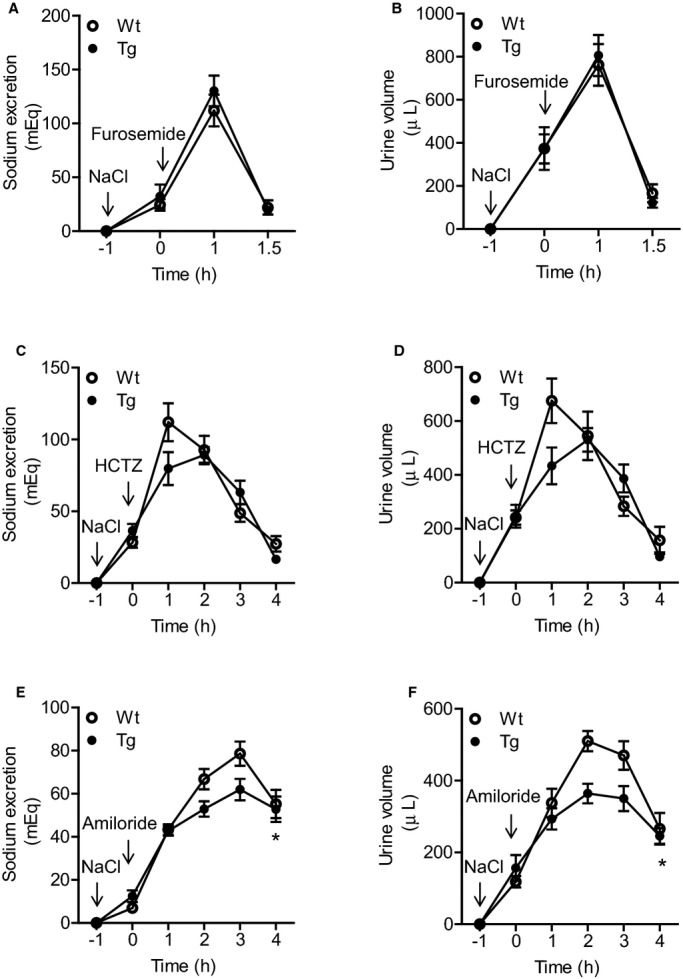Figure 4.

Effects of specific inhibitors of the sodium transporters NKCC2, NCC, and ENaC on natriuresis in Wt and Tg mice. A and B, Effect of furosemide on natriuresis in Wt and Tg mice. The response to furosemide (5 mg/kg) was comparable. C and D, Effect of HCTZ on natriuresis. The response to HCTZ (25 mg/kg) was significantly suppressed in the Tg mice compared with the Wt mice. E and F, Effect of amiloride on natriuresis in Wt and Tg mice. The response to amiloride (5 mg/kg) was also significantly suppressed in the Tg mice. For the experiments, mice were injected intraperitoneally with saline at 70 μL/g BW to facilitate voiding. One hour later, each of the specific sodium transporter inhibitors was injected intraperitoneally (at 0 hour), and urine was collected every hour thereafter. Values are expressed as mean±SE (n=6 in each group). *P<0.05, Tg vs Wt mice. BW indicates body weight; ENaC, epithelial Na+ channel; HCTZ, hydrochlorothiazide; NCC, Na+Cl− cotransporter; NKCC2, sodium–potassium–chloride cotransporter 2; Tg, renal angiotensin II type 1 receptor associated protein transgenic; Wt, wild type.
